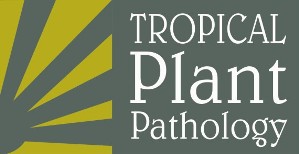Samples from four regions, representing 76% of the garlic growing area in Brazil, were tested by RT-PCR for the presence of Onion yellow dwarf virus (OYDV), Leek yellow stripe virus (LYSV), Garlic common latent virus (GCLV), Garlic virus C (GarV-C), Garlic virus D (GarV-D) and Garlic mite-borne filamentous virus (GarMbFV). The samples (352 bulbs) represented five agricultural systems: traditional common garlic (CG), virus-free common garlic (VFCG), non-vernalized noble garlic (NVNGSG) and vernalized noble garlic cultivated by small growers (VNGSG), and vernalized noble garlic adopted by major growers (VNGMG). Multiple infections were detected in 22% of the samples. Potyvirus species were present in all regions. LYSV prevailed over OYDV while the carlavirus GCLV was less prevalent. GarV-C and GarMbFV were the most prevalent among the allexivirus species. The NVNG production system had a higher prevalence of LYSV and GarV-C. The CG production system, that uses less technology, had the highest prevalence for all species, especially LYSV that prevailed in 94% of the samples. Overall, the regions with higher technological input employing better quality seeds had the lowest viral prevalence for all species. This monitoring provides information to establish a strategy to raise the phytosanitary quality and the national productivity of garlic.
Allium sativum; diseases; occurrence; production system; RT-PCR; viruses



